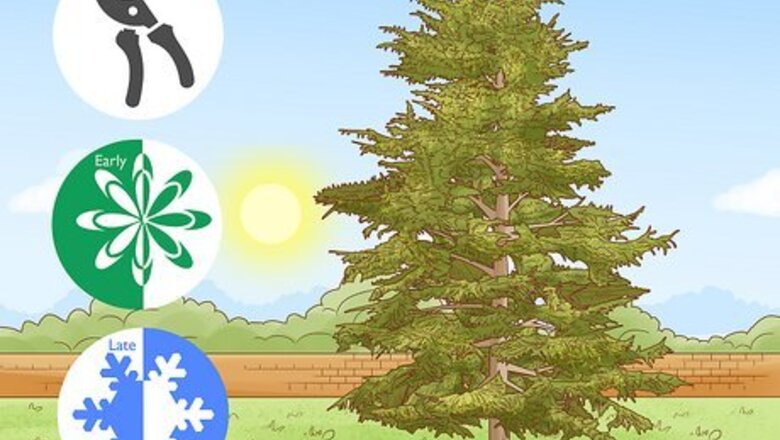
views
X
Trustworthy Source
Missouri Botanical Garden
Oldest botanical garden in the U.S. and center for botanical research and science education
Go to source
Regardless of whether the conifer is a tree or shrub, they are generally pruned in the same way.
Using the Correct Pruning Method
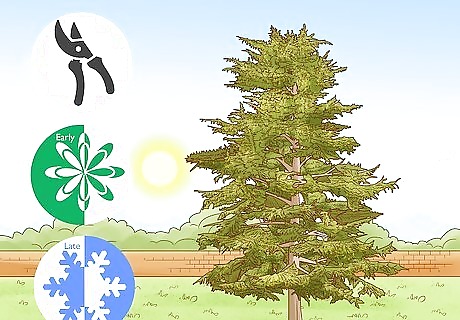
Prune conifers in late winter or early spring. In general, conifers should be pruned in late winter or early spring to encourage lush, healthy new branches and foliage in the spring. There is also less risk of fungal infections at this time of the year because the bark is more easily damaged while the trees are growing.
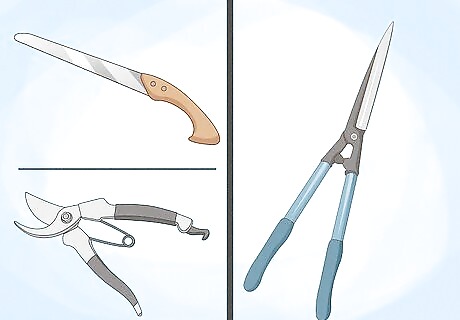
Choose sharp, correctly-sized tools. The tools used for pruning conifers should always be sharp, as this is safer and more effective. You can determine which type of tool to use based on the size of the branches being pruned. If the branches are less than ½-inch thick, use hand or bypass pruners that cut with a scissor action. If the branches are larger than ½-inch thick but less than 1 ⁄2 inches (3.8 cm) in diameter, use loppers or lopping shears. When the branches are more than 1 ⁄2 inches (3.8 cm) in diameter, use a pruning saw. Hedge clippers or shears can be used to shape conifers that are grown as a hedge or maintained in a particular shape.
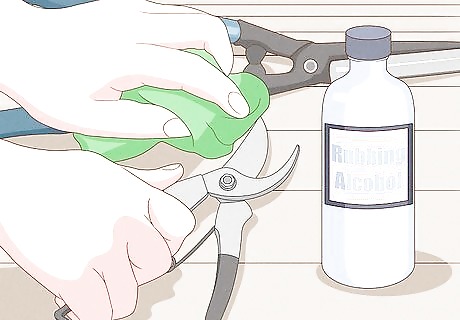
Disinfect the pruning tools before using. It’s recommended that gardeners disinfect any tools they are going to be using with either alcohol or regular bleach before they begin pruning their trees. This helps to prevent any lingering contaminants from being unintentionally spread throughout one’s yard.
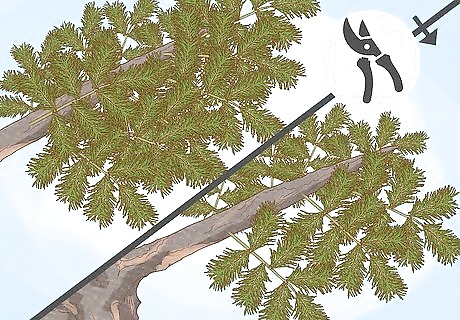
Identify which branches can and should be cut. The main leader of a conifer tree should not usually be pruned. However, if the tree grows a second leader, you can prune off the weaker of the two. You can also trim the branches back to neaten the conifer up, if necessary. Remove entire branches to thin out overly-thick growth, if necessary, and open the interior of the conifer up for better sun exposure and air circulation. Branches that are growing at angles will also need to be removed. Choose the branches carefully, though. Once an entire branch is removed from either a tree or shrub conifer, it will not grow back.
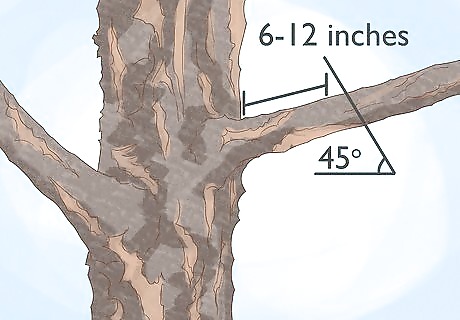
Cut the branches at a 45° to 60° angle, in the correct location. Prune off entire branches at a 45° to 60° angle just outside of the branch collar. Be very careful not to damage the branch collar, which is the raised area of bark at the base of the branch. Larger branches should be cut off 6 to 12 inches (15.2 to 30.5 cm) away from the branch collar.
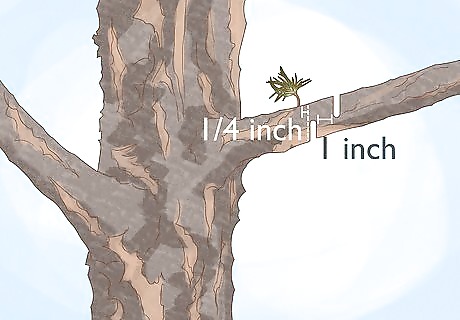
Make two cuts into each branch. Cut about halfway through the branch from underneath then cut halfway through from the top, about one inch beyond where the cut made on the underside of the branch. The weight of the branch will cause it to snap off. This will eliminate the main weight of the branch and protect the branch collar from damage. Prune the rest of the branch back to the branch collar. When only part of a branch is pruned off, the cut should be made about ¼ inch beyond a new leaf bud.

Familiarize yourself with the pruning requirements of specific species. Certain coniferous tree species have specific requirements when it comes to pruning, so it's important that you take these into account. For instance, pine trees have a leader, or main stem, that can be reduced to a 10 inch (25.4 cm) stub in order to produce a stockier, more compact tree. The side branches at top should be trimmed until they are about 5 inches (12.7 cm) shorter than the top branch. The downward limbs can be pruned in decreasing increments to form a pyramid-like overall shape. Branches on Douglas fir trees that are over 5 inches (12.7 cm) around should not be pruned, because this puts the plants at a great risk for fungal infections.
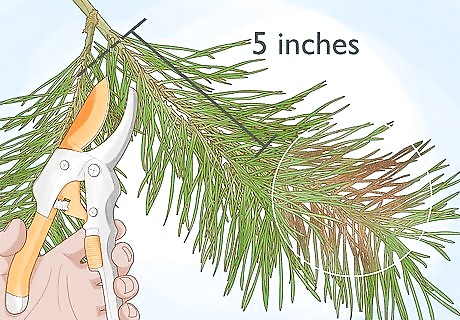
Be sure to remove any diseased portions of the tree. Coniferous trees with a disease problem should have their branches pruned about 5 inches (12.7 cm) away from the infected portions, taking care to only cut live wood. Gardeners should wait for a period of dry weather to trim ailing trees because this will reduce the spread of pathogens. It's also important to clean and sterilize the pruners with a household disinfectant before and after each use to help reduce the spread of disease. Use a rag to wipe the disinfectant off the pruners before using them again, as disinfectant can cause damage to the tree. The diseased portions of the tree should either be burned or left for the local waste disposal crews to pick up. These limbs should not go into the compost bin.

Consider hiring a professional company to prune the trees for you. If the evergreens in question are located near power lines, it is best to hire a reputable tree surgeon rather than tackle the problem on one’s own. It is recommended that estate owners shop around and get several opinions on the work they need done before selecting a company to perform the task for them. In this way, one will find the best bargains and avoid the needless expense of unnecessary procedures.
Avoiding Pruning Errors
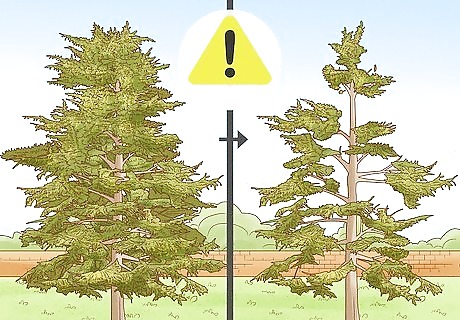
Be aware that most conifer species will not survive a severe pruning. Gardeners should keep in mind that most conifer species, with the exception of yew, cannot survive a severe pruning. Although the green foliage can be trimmed, the brown areas of old growth should be left alone because these places will not regenerate if cut.
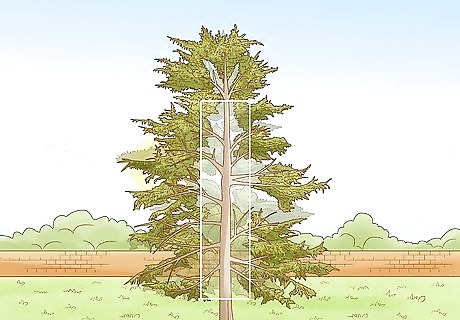
Refrain from pruning into the empty, central area of the tree. Some conifers have an area in the center where no foliage grows, but this is normal and not indicative of any problems. In trees where this is the case, gardeners should avoid pruning into this area because doing so will result in a lopsided tree. The plants will not grow back to cover up the hole. Therefore, tree trimmers should check the foliage areas before making decisions about which branches to lop off
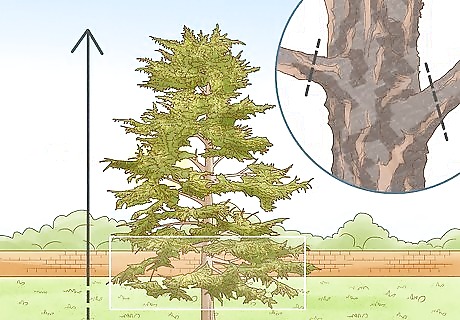
Only remove the bottom branches of trees when absolutely necessary. Although wanting to remove the lower branches of a tree is understandable, gardeners who do so may end up with an unsightly specimen when the tree gets taller. Therefore, tree trimmers should exercise restraint and only remove the bottom branches when it becomes absolutely necessary.
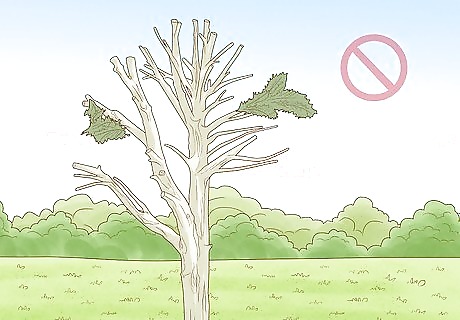
Avoid topping evergreen trees. Evergreens should not be topped, or cut off at a certain height, because this will produce trees that are anything but attractive. Trees that are topped are also at a greater risk for disease and other ailments.
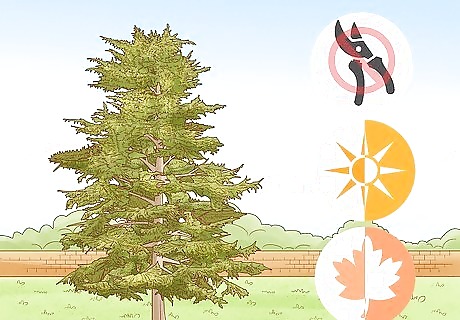
Do not prune conifer trees too late in the year. Conifers should not be pruned later in the summer or in the fall. Late season pruning can result in new, lush growth that will not have a chance to mature before the cold, damaging winter weather.










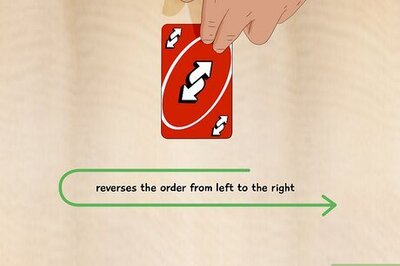





Comments
0 comment